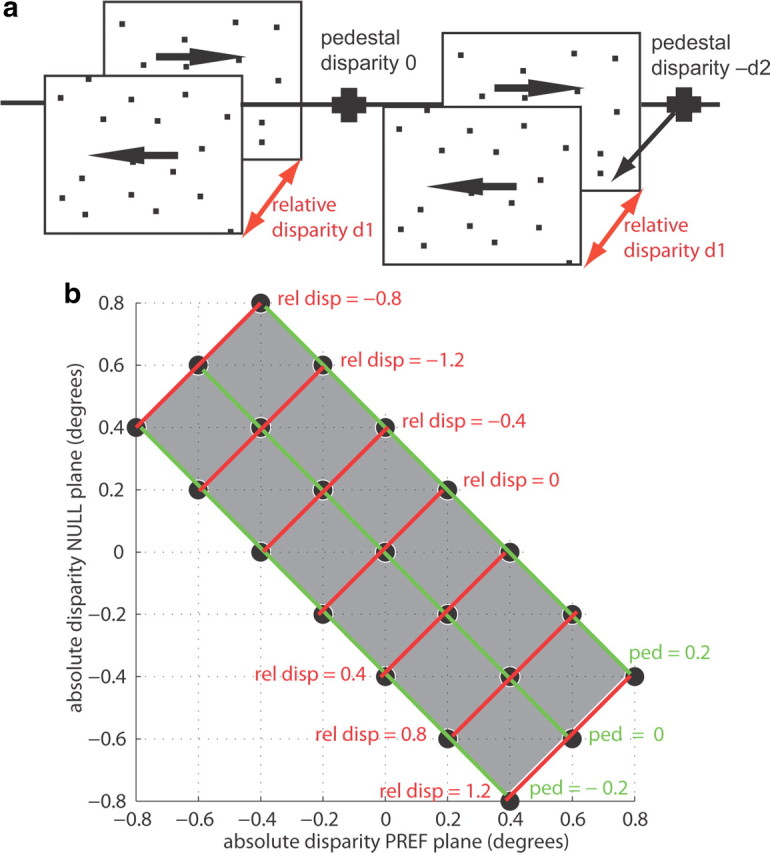Figure 1.

Relative disparity stimuli. a, The relative disparity stimulus consisted of two transparent planes of dots moving in opposite directions. One set of dots always moved in the preferred direction of the recorded neuron, the other set moved in the opposite, null direction. The planes were separated in depth by the relative disparity d1 applied to the two sets of dots (red arrows). In these experiments, we also interleaved trials in which a pedestal disparity was applied to both planes. On the left is a set of planes with a pedestal disparity of zero. The line through the fixation point illustrates that the center of the two planes is at the fixation plane. A pedestal disparity −d2 was applied to the stimulus on the right, moving both planes forward. This pedestal disparity changed the absolute disparity of each of the two planes, but the relative disparity d1 between the two planes stayed constant. b, This diagram gives an example of a typical stimulus space explored in these experiments. Stimuli are described in terms of the absolute disparity for the preferred (PREF) (x-axis) and null (NULL) motion plane (y-axis) of the recorded neuron. Stimulus combinations along each green line have the same pedestal disparity (ped); stimuli along one red line have the same relative disparity (rel disp). This configuration was chosen as it allowed the investigation of a range of relative disparities across an equal number of preferred and null motion disparities in a reasonable number of trials.
